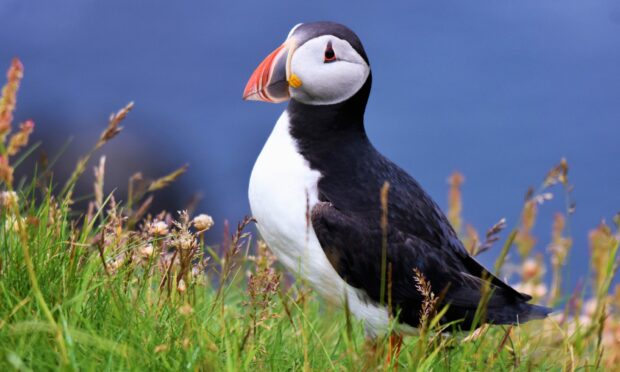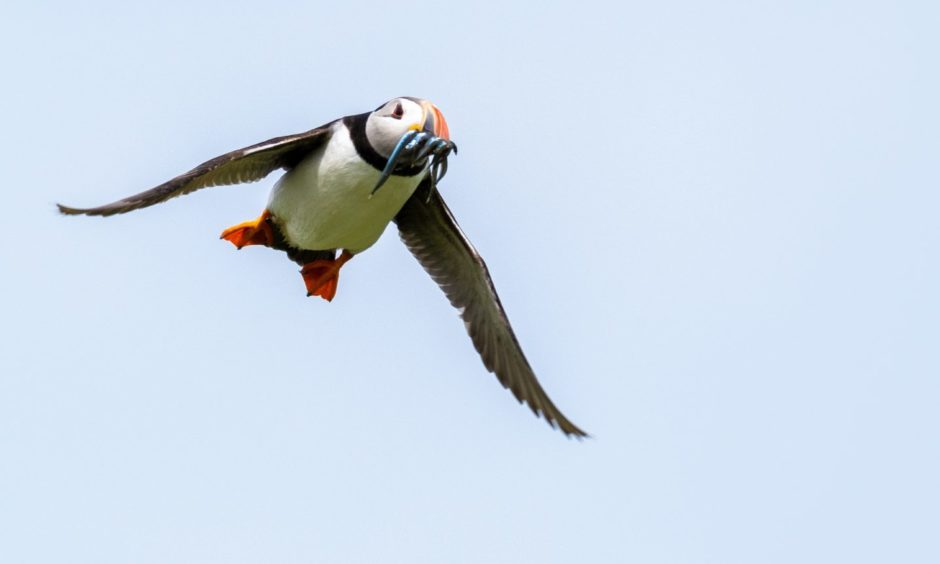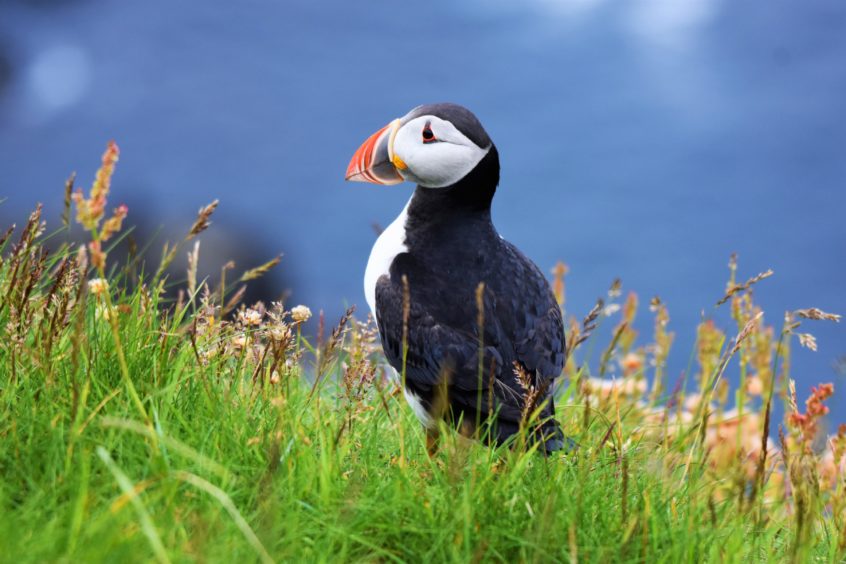Shetland is an extraordinary place and I have been smitten by the islands ever since my first visit there over three decades ago – an affection that has grown into a deep and burning passion that gains in intensity with each passing year.
One place that always excites is Sumburgh Head where the stars are the puffins, which nest in burrows on the top of cliffs and on adjacent steep grassy slopes.
Although puffins are more than capable of making their own burrows by using their bill and feet to push the soil out behind them, they frequently use redundant rabbit burrows, which saves time and effort in construction.
The puffins at Sumburgh were incredibly tame, and it was a joy to be among these comical, black and white ‘dinner suit’ plumaged birds, with their large multi-coloured bills.
Almost as addictive as watching the puffins was observing the reaction of tourists enjoying being in such proximity to them, underlining our close bond and connection with nature.
Arctic terns
Wherever I ventured in Shetland, the constant calls of Arctic terns filled the air.
In the northern isles, Arctic terns are known as ‘tirricks’ in reflection of their distinctive omnipresent calls.
I imagine local people find it a tremendously sad moment when the birds depart in late summer, and an occasion of real joy when they return in May.
Affinity
Since the earliest of times Shetlanders have had a particularly close affinity with nature, and this is reflected in the wide variety of local names for creatures, such as tirrick. Puffins are known as ‘Tammie Norries’ and black guillemots as ‘tysties’.
On my final day, I ventured to Unst, the northernmost isle. Hermaness on the far northern tip was a place I had never been to before, and it drew me in like an irresistible magnet, somewhere I instinctively knew my feet had to tread so that my lungs could breathe-in the essence of the wild north.
It wasn’t the ideal day to visit Hermaness, as low mist swirled across the moorland approach walk, but in a strange way that didn’t really matter, and the grey murk accentuated the remoteness of this far northern fringe of Scotland.
White-fluffed bog cotton nodded in the breeze and the small yellow blooms of tormentil dotted the ground, while bonxies floated in and out of the wisp as they patrolled the air.
As I approached the cliff top, the calls of numerous seabirds spirited up through the air, yet as I peered over the cliff edge none could be seen because of the grey, opaque mist.
But I could smell them, the rich pungent odour of guano upwelling in the air currents.
The mist momentarily lifted to reveal a rocky islet in the sea below, where a mass of nesting gannets had congregated on a sloping shelf.
The mist swirled in again and the gannet rock disappeared into the grey void with the suddenness of a closing theatre curtain, leaving behind their wild cries in the cool northern sea air.
INFO
Shetland is a haven for a wildlife and is home to rare breeding birds such as the red-necked phalarope. It is also a great place for seeing orcas (killer whales).












